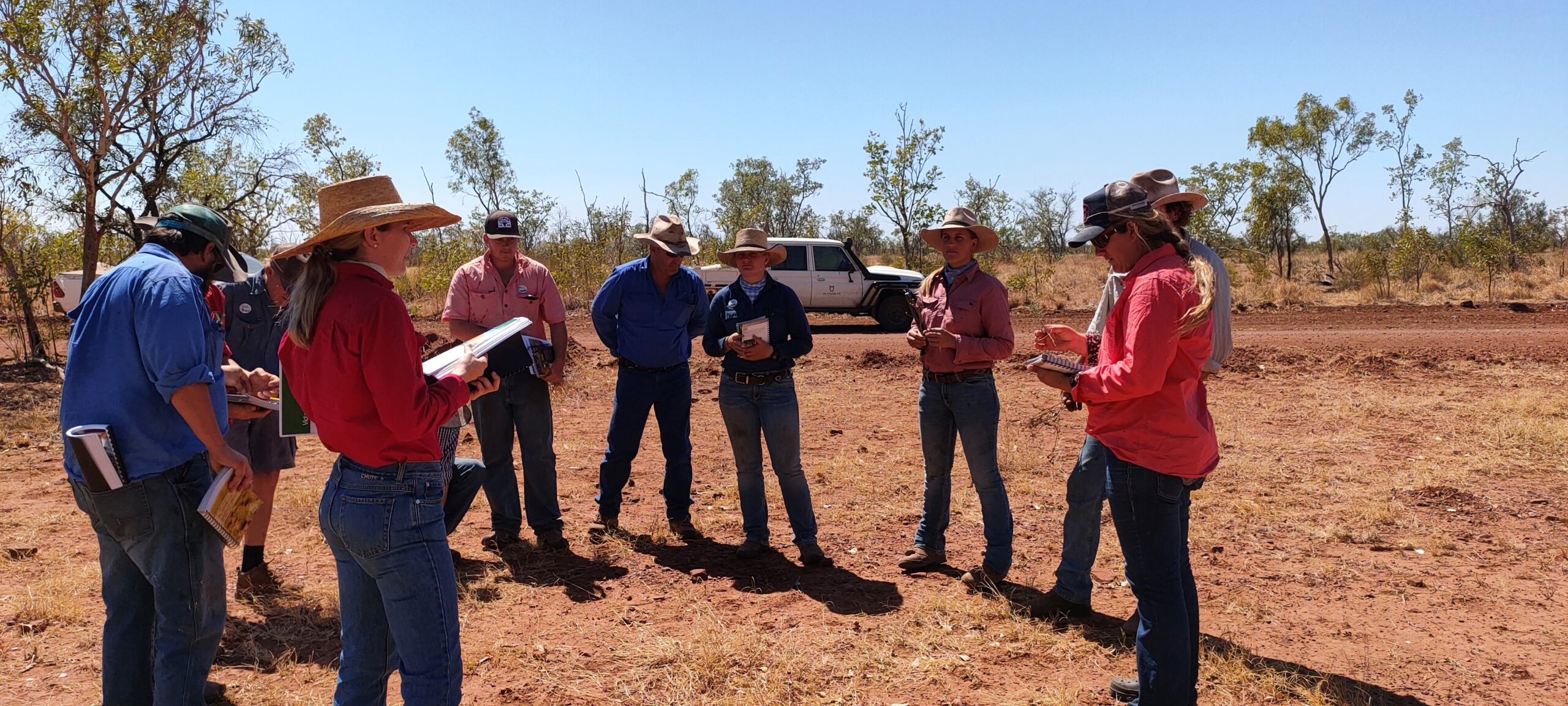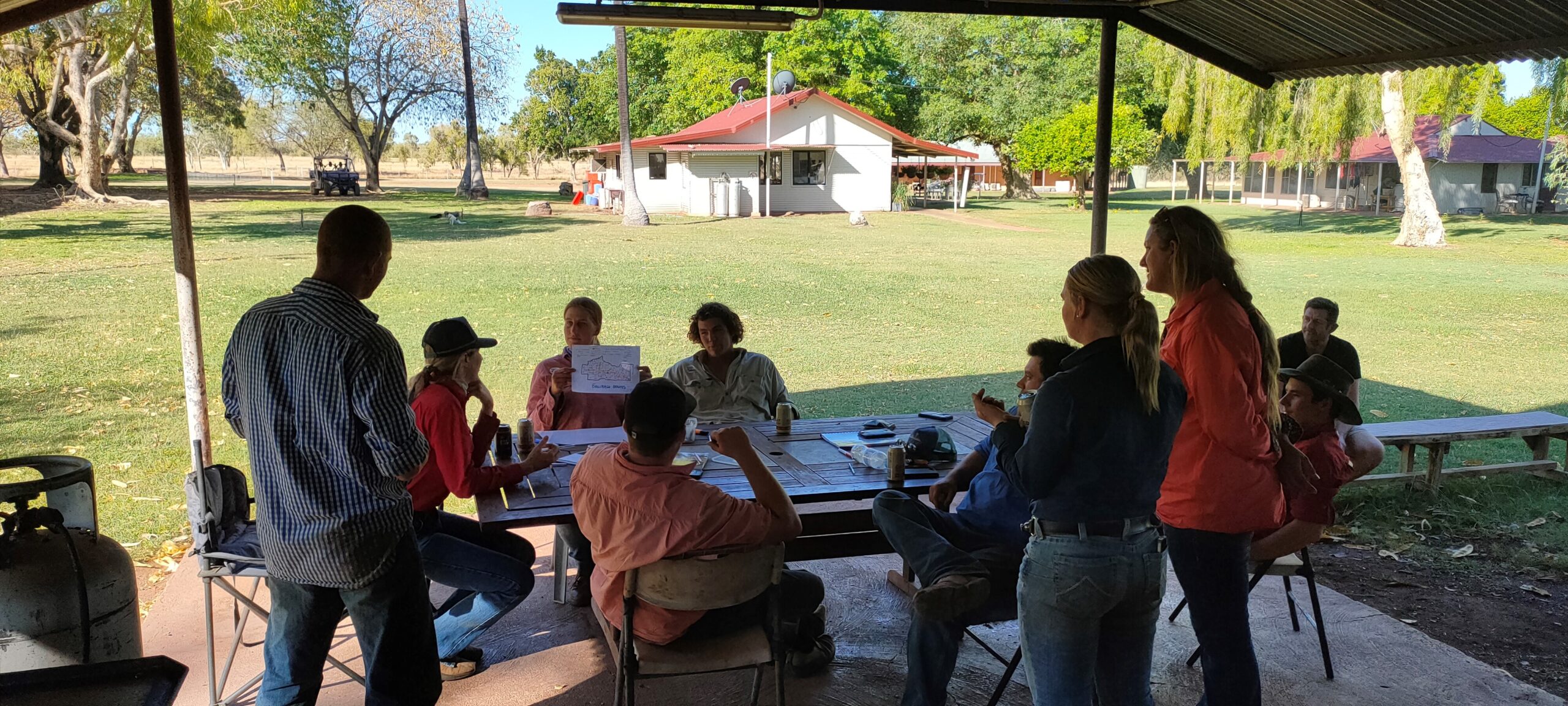To manage cattle you must first manage rangelands — Rangeland Management education for ringers
Written by Stacey Holzapfel, Pastoral Extension Officer, Northern Territory Department of Industry, Tourism and Trade
If you’d given me a land system map when I was a first or second year ringer and asked me to present to a group how I would plan a station on it, I wouldn’t have had a clue where to start.
If you’d asked me the same thing after 4 years of university, I still would have been pretty hopeless.
After learning the content of our Department of Industry, Tourism and Trade (DITT) Rangeland Management course, however; I might just be able to draw in some fences and justify how many head I’d run in those paddocks.
That’s exactly what the staff of Mt Sanford station did when myself and Georgia Glasson spent the day there delivering a Rangeland Management Course — covering many things we wish we knew when we were in their shoes.

The DITT Rangeland Management Course is a free, one-day, on-station course that has been delivered across the Territory for 20 years or more. It covers important topics such as:
- species identification
- land condition assessment
- nutrition
- weeds.
Our aim is to introduce rangeland management factors to staff who may not have had to think about these things before, as well as re-capping the fundamentals for more experienced staff.
The broad nature of the course means it can be tailored to each property. This often leads to a lot of discussion and us presenters learning as much as the participants!

The feedback we receive from these courses is great, bar the common complaint from ringers of having to sit still whilst we run through the theory.
Once that is done, we head out to the paddock to put it into practice.
At Mt Sanford, we sent three groups off to find some perennial grasses, annual grasses and forbs. Participants are then required to report back to the group with a species identification for each and their value to cattle production. A few people were quite interested to learn the differences between the value of grass species, and that a paddock that appears to be in “A” condition may not actually be — depending on the species present, i.e. the cattle have already eaten out all of the preferred pasture species.

To bring everything together, we set two groups the task of designing a station starting with a map containing just a boundary fence and the land systems.
Using the Victoria River District Land Condition Guide and their knowledge of rangeland management, each group was able to discuss why their paddocks and watering points were where they put them, and how many and what class of cattle were in each paddock.
They were also required to implements strategies to manage hypothetical scenarios including a weed outbreak, erosion and threatened duck species living in one of their waterholes. Of course, with no defined budget for this plan, their stations also featured the likes of indoor campdraft arenas and waterparks (essential for staff retention they said).

As a former ringer who didn’t give grass a second thought, I can highly recommend that all station staff attend one of these courses — or similar — if you get the opportunity.
Whether you use this knowledge every day or just have an awareness of how healthy rangelands are vital to cattle production and how you can visually assess their condition, you might just start to think about grass, not just the cattle eating it.
For more information about Rangeland Management Courses, offered by NT DITT, contact Stacey Holzapfel on 08 8973 9730.